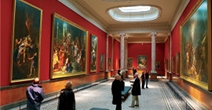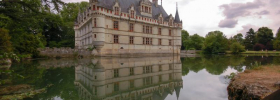 Home
Home- > Tours
- > Picardie
- > Aisne
- > Villers-cotterets
- > Villers-cotterêts
Villers-cotterêts
| Topic | Sciences and discovery |
| Departure | VILLERS-COTTERETS (02) |
| Details | Villers-Cotterêts is a city located at the south of the department of Aisne. The commune is dominated in the East by the national forest of Retz. |
Discover Villers-Cotterêts
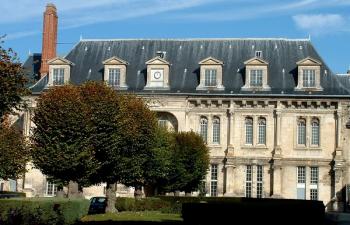
Situated in a handle of the forest of Retz, Villers-Cotterêts developed thanks to the presence of this timbered solid mass, source of material for construction, the trade and the craft industry, and hunting ground of the first princes of the kingdom.
The stays of the royal family are at the origin of the construction of the castle, but also of the establishment of abbeys and the architectural development of the borough.
Villers-Cotterêts, although taking root in the present with the establishment of the group Volkswagen France in 1962, and the opening of the College European in 1992, preserved the charm of its past.
To continue the visit of Villers-Cotterêts:
- The Castle François Ier
- The Museum Alexandre Dumas on the traces of Dumas
- The Church Saint Nicolas
- Town hall
- Hotel the Regent
- The Castle of Valley fountains
- Chartreuse de Bourgfontaine
- The Saint Field Rémy
Accommodation nearby
Discover the forest of Retz
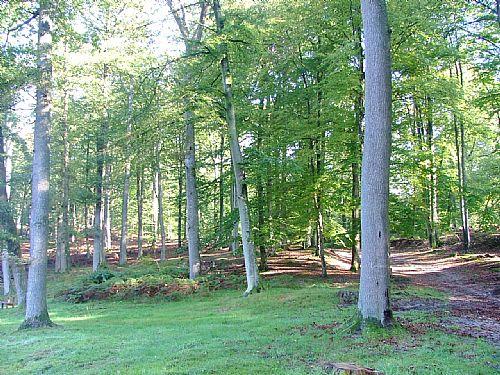
The forest is primarily a hêtraie, treated in regular grove, where you can find the oak, charm, ash, wild cherry tree, the maple, the birch and the chestnut like various gasolines of coniferous tree in the sandiest pieces. About fortnight of the remarkable trees were listed there.
It shelters a multiple wildlife: stags, hinds, roe-deers, wild boars, pheasants, rabbits, hares and foxes.
The forest of Retz shelters a device of the European network of the observation of forests (RENECOFOR) and 3 sites of the European network of conservation of the natural habitats (Network Natura 2000*). It also comprises for the North-West of France, the site of conservation of the genetic resources of the beech.
In 1214, the forest of Retz was attached to the royal field. She was given in prerogative, in 1498, in François d' Angouleme, the François future Ist In 1630, the forest became the property of the family of Orleans until the French revolution. In 1791, the forest had built-in with the field of l' State. In 1814, with the fall of Worsen, it was restored in Orleans before becoming again, and definitively, property of State in 1848.
The forest of Retz was the theatre of the rough combat and suffers many damage during the First World War. This is from its observatory of the " Réaumont" turn; , set up on one of the culminating points of the solid mass which the Mangin general launched, on July 18, 1918, the ultimate and victorious offensive.
60 kilometers of forest roads and 560 kilometers of thin layers and forest roads, forming nearly 400 crossroads, allow discovering the various aspects, the hidden treasures, among which Royal alley, the pond of Malva, Saint-Hubert hermitage, the floret of the circuit of the Pots, the cellar of the Devil and heathers of Gondreville where you would believe to transport in another forest so much the vegetation is different from the remainder of the solid mass there, the fountain of the Prince and the ponds of Ramée where still slips, in the fog of the evening, the shade of Norah, the ondine of Rowed, in the search of its lost love, but also the Clouise stone, undoubtedly the most famous site of the forest of Retz.
Accommodation nearby
Visit the village of Corcy


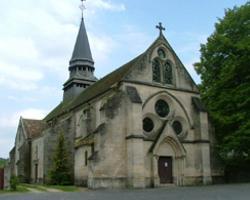
Built in edge even of the forest of Retz, with the confluence of Savière and of its affluent, the " Ru of Fleury" , Corcy exists since the IX century.
After the rupture of the Way of the Ladies (May 27, 1918), the village was largely destroyed by the fierce combats which marked the limit of the German progression. The martyrdom which borders the road in front of the church points out this fact.
Destroyed to the transept by the combat of June 1918, the church Saint-Alban (XII and XIII centuries) was saved only by its classification MH on February 20, 1920 which made it possible to engage of work of restoration. The church contains a Virgin with the Child (out of stone, XIV century). The very pure Gothic invoice, this statue is classified M.H.
Other curiosities: the Fontaine Saint-Martin, located between Dampleux and Fleury and Pierre Fortière, rock shelter with traces of polishing machines.
Accommodation nearby
Visit the village of Dampleux
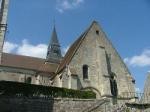

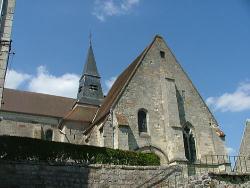
Very beautiful village of Valois. The church (XII and XVI centuries - Inv. M.H.) is dedicated to Saint-Leu or Saint-Wolf (" dominus Lupus") whose festival celebrates on September 1. The dedication with this saint is related to the presence of the forest, the wolves and water with its virtues. Saint-Leu of Dampleux was judicious to cure fear!
Other curiosities: the Saint Martin's day fountain, located between Dampleux and Fleury and Pierre Fortière, rock shelter with traces of polishing machines.
Accommodation nearby
Visit the village of Fleury
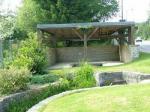

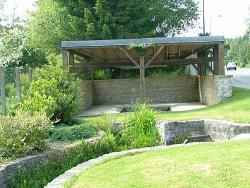
Fleury is a picturesque village bordered by the ponds of Ramée and Fleury.
The church Saint Martin (end XII century) is built on a headland.
The Gosset Fountain feeds a small laundrette and gives rise to the " Ru of the Gosset" Fountain; who crosses the village of west in east.
The Fountain of the Prince is the ultimate vestige of the héronnière of the castle of Villers-Cotterêts installed formerly on the roadway which separates the two ponds, the small one and the large one.
Other curiosities:
- the square house of the XVII century
- The farm of Fleury and its circular dovecote
- The laundrette supplied with the "Ru of the Fountain of Village" whose water joins those of the "Ru of the Gosset" Fountain to form the "Ru of Fleury".
- Surface of picnic near the pond of small Rowed.
Accommodation nearby
Visit the village of Largny-sur-Automne
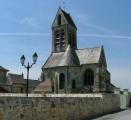

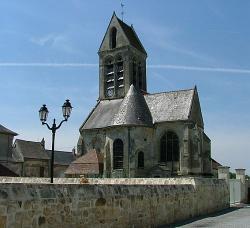
Largny-sur-Autumn, located upstream valley of the Autumn at the skirt of forest of Retz, seems a peaceful village of plate, from where from the field crops the silhouette of the bell-tower of its church emerges.
The church Saint-Denis (XII, XIII and XVI centuries - Cl. M.H.) is one of the most beautiful religious buildings of the area.
Gardens of the castle of the Dumb woman
Astonishment and enchantment! The gardens of the Dumb woman are arranged along the vestiges of a large terrace of XVI century and around a house which was that of Longueval, captains of huntings of François 1st with Henri IV.
Accommodation nearby
Visit the village of Longpont
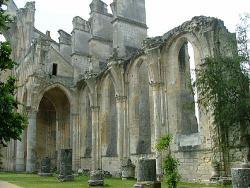
The Roman way of Soissons in Meaux crossed the marshes of Savière there, in skirt of forest of Retz. A empierré ford then ensured the passage, which brought the creation of the village and its name gave him: " longus pons".
The village of Longpont preserves the ruins of an abbey gothic script (Cl. M.H) which had the size of the large cathedrals, and the buildings of the abbey rested by Saint-Bernard in 1131 and devoted to the next century in the presence of Saint-Louis.
To see: Abbay of Notre-Dame
Accommodation nearby
Visit the village of Louâtre
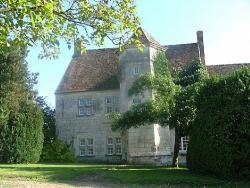
The village of Louâtre misses neither of variety, nor of picturesque. Its many hamlets spread out along Savière and of Nadon.
The village suffered much from the war but three monuments, however, survived.
The church Saint-Remy cheese (Cl. M.H.) date of XII and XVI centuries.
The Manor of Estrées or Firm of the Receipt (XVI century - Inv. M.H.). Jean d' Estrées was Grand Master of Artillery under Henri II, from where the gun and the balls which decorate the window on the frontage which faces the church. (Private property - does not visit - visit of outsides at the time of the Days of the Inheritance).
The Manor of the Desert (XVI century - Inv. M.H.). Located in a pleasant framework of greenery, its of stone and its hexagonal turret mullioned windows of staircase confer an unquestionable seal to him. (Private property - does not visit itself - visit of outsides at the time of the Days of the Inheritance).
Accommodation nearby
Visit the village of Montgobert
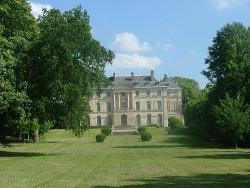
Montgobert is a steep and picturesque village.
The Saint-Sulpice church dates from XII and XVI century.
The castle of Montgobert, construction of the end of XVIII century (I.S.M.H.), which belonged to Pauline Bonaparte sister of the Napoleon Emperor 1st and marries of the Leclerc general, shelters a museum of wood and tool. Exposure of old tools, reconstitution of workshops and evocation of the life of the area. The park of the beginning of the XIX century, taken again by Duchêne, carries out castle, by an alley in frontal prospect, to the tomb of the general Leclerc (Cl. M.H.) and with a monumental vase. (Private Historic building. Opening to the public of May 1 to October 1, 2008, Sunday and bank holidays from 14:00 to 18:00. July and August, every day except Tuesday from 14:00 to 18:00.
Other curiosities: the pond, on the road of Puiseux-in-Retz, which constitutes a pleasant place of walk and the Monument Van Vollenhoven, on the road of Longpont.
Accommodation nearby
Visit the village of Vivières


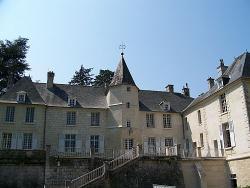
Vivières owes its name with the full of fish ponds located on his territory.
The church, dedicated to Notre-Dame and Sainte-Clotilde more recently, date of XII and XVI centuries and was decorated at the XIX century with a frontage and a neo-classic gantry of four columns of Doric order.
The castle of Mazancourt (Inv. M.H. - private property - does not visit) date of XVI and XVII centuries. At the beginning of the XXème century, the castle became the property of Henry Bataille, author and recognized poet.
Accommodation nearby
Latest news on : Villers-Cotterêts
Tourism near
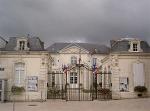 Visit the city of Villers-cotterets
Visit the city of Villers-cotterets - 4 Museum
- 3 Monuments
Tours
 Pierrefonds
Pierrefonds
 Discover the oise department
Discover the oise department






















